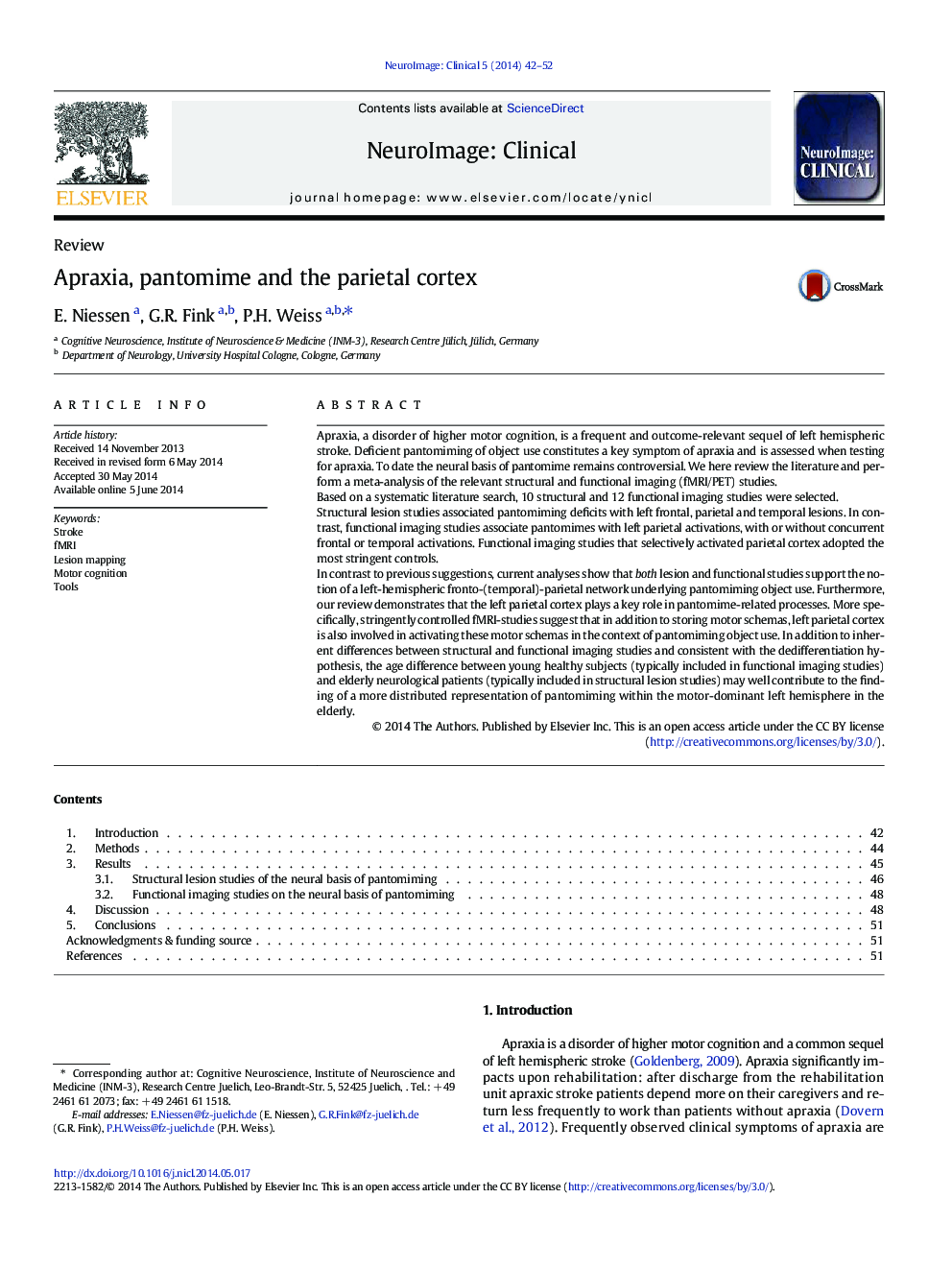| کد مقاله | کد نشریه | سال انتشار | مقاله انگلیسی | نسخه تمام متن |
|---|---|---|---|---|
| 3075429 | 1580962 | 2014 | 11 صفحه PDF | دانلود رایگان |
• Structural and functional imaging findings on tool-use pantomime converge
• A left hemispheric fronto-parietal network is involved in pantomiming tool-use
• The left (inferior) parietal cortex (IPL) plays a key role in this network
• IPL triggers the internal activation of a motor schema associated with a pantomime
Apraxia, a disorder of higher motor cognition, is a frequent and outcome-relevant sequel of left hemispheric stroke. Deficient pantomiming of object use constitutes a key symptom of apraxia and is assessed when testing for apraxia. To date the neural basis of pantomime remains controversial. We here review the literature and perform a meta-analysis of the relevant structural and functional imaging (fMRI/PET) studies.Based on a systematic literature search, 10 structural and 12 functional imaging studies were selected.Structural lesion studies associated pantomiming deficits with left frontal, parietal and temporal lesions. In contrast, functional imaging studies associate pantomimes with left parietal activations, with or without concurrent frontal or temporal activations. Functional imaging studies that selectively activated parietal cortex adopted the most stringent controls.In contrast to previous suggestions, current analyses show that both lesion and functional studies support the notion of a left-hemispheric fronto-(temporal)-parietal network underlying pantomiming object use. Furthermore, our review demonstrates that the left parietal cortex plays a key role in pantomime-related processes. More specifically, stringently controlled fMRI-studies suggest that in addition to storing motor schemas, left parietal cortex is also involved in activating these motor schemas in the context of pantomiming object use. In addition to inherent differences between structural and functional imaging studies and consistent with the dedifferentiation hypothesis, the age difference between young healthy subjects (typically included in functional imaging studies) and elderly neurological patients (typically included in structural lesion studies) may well contribute to the finding of a more distributed representation of pantomiming within the motor-dominant left hemisphere in the elderly.
Journal: NeuroImage: Clinical - Volume 5, 2014, Pages 42–52
